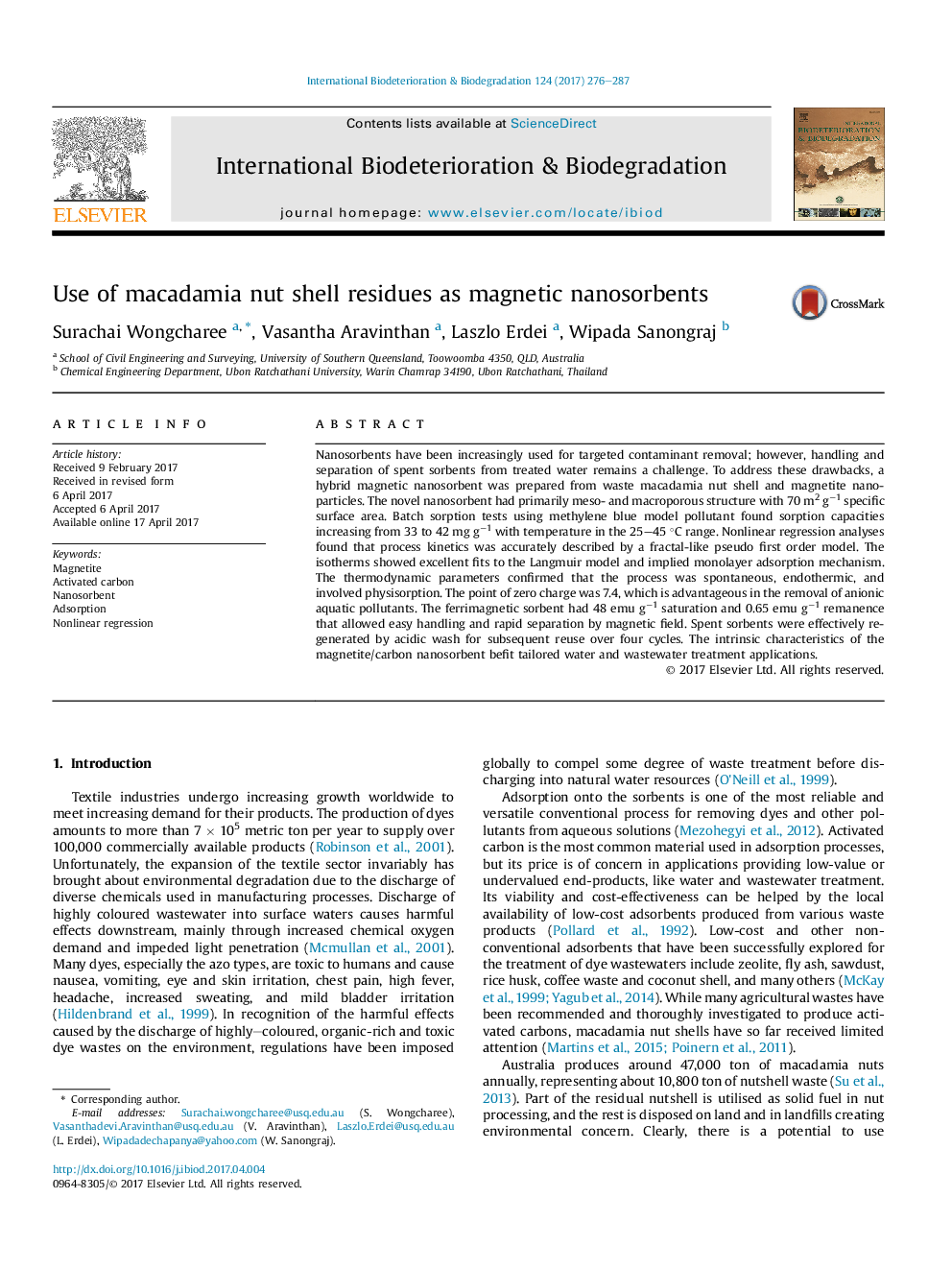| کد مقاله | کد نشریه | سال انتشار | مقاله انگلیسی | نسخه تمام متن |
|---|---|---|---|---|
| 5740345 | 1616293 | 2017 | 12 صفحه PDF | دانلود رایگان |

- Magnetic hybrid nanosorbent was prepared from waste macadamia nut shells.
- Sorbent had specific surface area of 70Â m2/g and adsorptive capacity of 33-42Â mg/g.
- Used sorbents were readily recovered by magnets for regeneration and reuse.
- Desirable characteristics are amenable for low-cost pollution control applications.
Nanosorbents have been increasingly used for targeted contaminant removal; however, handling and separation of spent sorbents from treated water remains a challenge. To address these drawbacks, a hybrid magnetic nanosorbent was prepared from waste macadamia nut shell and magnetite nanoparticles. The novel nanosorbent had primarily meso- and macroporous structure with 70 m2 gâ1 specific surface area. Batch sorption tests using methylene blue model pollutant found sorption capacities increasing from 33 to 42 mg gâ1 with temperature in the 25-45 °C range. Nonlinear regression analyses found that process kinetics was accurately described by a fractal-like pseudo first order model. The isotherms showed excellent fits to the Langmuir model and implied monolayer adsorption mechanism. The thermodynamic parameters confirmed that the process was spontaneous, endothermic, and involved physisorption. The point of zero charge was 7.4, which is advantageous in the removal of anionic aquatic pollutants. The ferrimagnetic sorbent had 48 emu gâ1 saturation and 0.65 emu gâ1 remanence that allowed easy handling and rapid separation by magnetic field. Spent sorbents were effectively regenerated by acidic wash for subsequent reuse over four cycles. The intrinsic characteristics of the magnetite/carbon nanosorbent befit tailored water and wastewater treatment applications.
Journal: International Biodeterioration & Biodegradation - Volume 124, October 2017, Pages 276-287